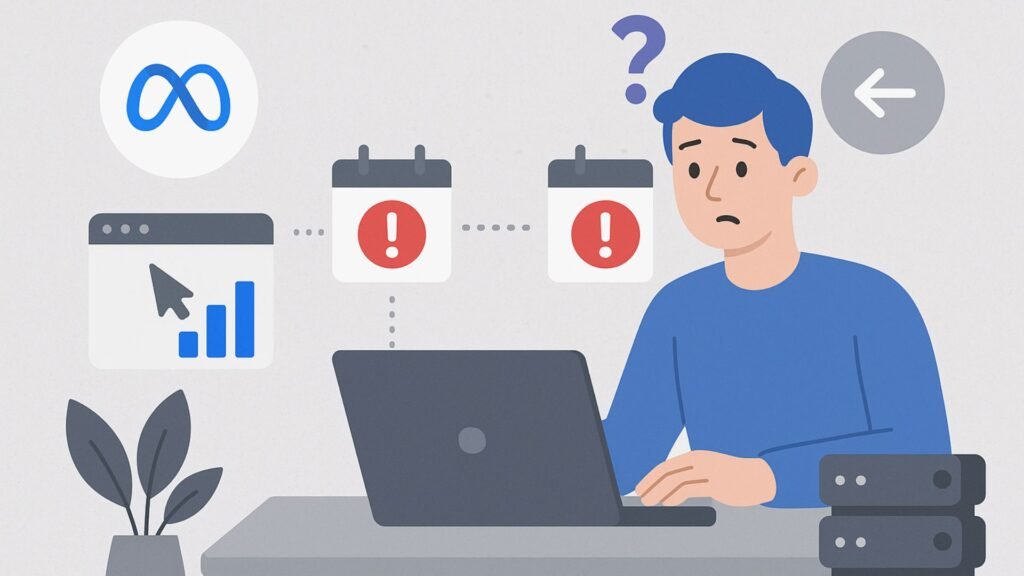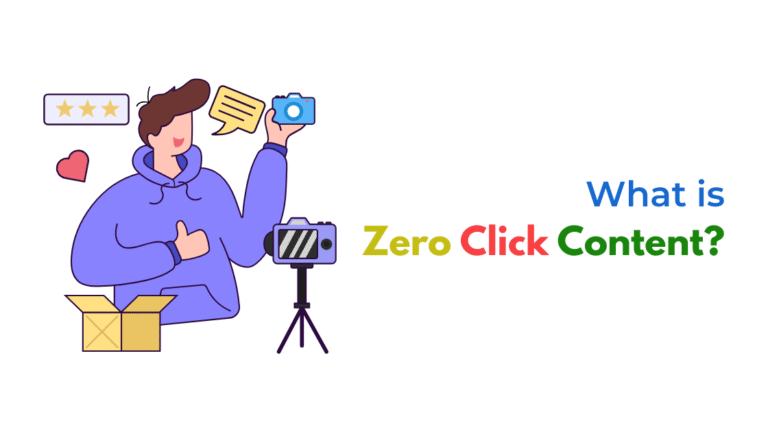
Duplicate events in Meta Ads occur when both the Meta Pixel (browser-side) and Conversions API (CAPI, server-side) track the same action without deduplication. This leads to inflated event counts, poor optimization, and inaccurate reporting. To fix it, implement event deduplication using consistent event_name and a shared event_id.
Introduction
When you’re using Meta Pixel and Conversions API (CAPI) together for conversion tracking, you’re aiming for full-funnel visibility—from the first browser click to the final server-side action.
This hybrid setup can dramatically improve ad optimization, attribution, and reliability. However, if not implemented correctly, it can double-count events, such as purchases, leads, or add-to-carts.
Duplicate events confuse Meta’s ad delivery system, skew analytics, inflate conversions, and impact your Return on Ad Spend (ROAS) calculations.
Let’s explore why duplicate events happen, how to detect them, and most importantly—how to fix them.
What Are Duplicate Events in Meta Ads?
Duplicate events occur when the same user action is recorded more than once, either:
- From multiple tools (Pixel + CAPI)
- Or multiple browser events (e.g., two Pixels firing)
- Without Meta recognizing they’re the same
Meta considers two events duplicates if:
- The event_name is the same
- The event_id is the same
- They occur within a short time window
If these identifiers don’t match or aren’t configured, Meta cannot deduplicate, resulting in double-counting.
Why You Should Care?
- Inflated Conversion Numbers: Your dashboard may show 2 purchases instead of 1.
- Poor Ad Optimization: Meta may optimize based on incorrect signals.
- Incorrect ROAS & CPA: Return metrics become unreliable.
- Budget Mismanagement: You might scale ads based on misleading data.
If you’re using CAPI + Pixel, deduplication is mandatory for clean, reliable data.
Common Scenarios That Cause Duplicate Events
Here are typical use cases where duplicates occur:
- Pixel and CAPI fire the same purchase event without deduplication
- Form submissions tracked on both client and server, without matching
event_id - Shopify or WooCommerce plugins auto-trigger CAPI and Pixel, but devs also manually trigger events
- CRM integrations that push events via CAPI while frontend also pushes via Pixel
How to Identify Duplicate Events?

Use Meta Events Manager to inspect whether duplicate events are being recorded.
Step-by-Step:
- Go to Events Manager
- Click your Pixel
- Open the Diagnostics tab
- Look for warnings like: “We received multiple instances of the same event”
- Go to Test Events or View Details
- Click on specific events (e.g.,
Purchase) - If you see: vbnetCopyEdit
Source: Pixel Source: Server Event Name: Purchase… but no matching Event ID — that’s duplication.
Meta’s Solution: Event Deduplication
Meta offers event deduplication using the event_id parameter. If Pixel and CAPI fire the same event name and same event_id, Meta will automatically deduplicate it.
How Event Deduplication Works (Behind the Scenes)?
When Meta receives two events:
- One from Pixel (browser)
- One from CAPI (server)
It checks:
- Are both event names the same? (
Purchase) - Are both event IDs identical? (
event_id = 1234XYZ) - Are both within a deduplication time window?
If yes → Meta keeps one and discards the duplicate.
How to Fix Duplicate Events?
Step 1: Assign a Unique Event ID in Pixel
When firing a Pixel event via JavaScript or GTM, assign a random unique event_id.
Example (JavaScript):
javascriptCopyEditfbq('track', 'Purchase', {
value: 59.99,
currency: 'USD',
eventID: 'xyz-123-purchase-789'
});
Or use a dynamic ID generator.
Step 2: Pass the Same Event ID to the Server (CAPI)
In your server (Node, PHP, Shopify, Zapier, etc.), when sending the CAPI event:
jsonCopyEdit{
"event_name": "Purchase",
"event_time": 1716894735,
"event_id": "xyz-123-purchase-789",
"user_data": {
"em": "hashed_email"
},
...
}
The event_id must match exactly the one used in the browser.
Step 3: Implement with Google Tag Manager (Browser + Server)
If you’re using GTM Web for Pixel and GTM Server for CAPI:
- In GTM Web:
- Generate a random event ID using a custom JavaScript variable
- Store it in a First-Party Cookie or Data Layer
- In GTM Server:
- Read the cookie or Data Layer variable
- Use that same ID in your CAPI event
This ensures the Pixel and CAPI share a consistent event ID.
Step 4: Use Meta’s Test Events Tool
- Go to Events Manager > Test Events
- Trigger a Purchase or custom event
- Ensure both Pixel and Server events appear
- Check that they share the same event_id
If both use the same event_id, Meta will deduplicate.
Step 5: Avoid Redundant Triggers
Don’t fire events multiple times accidentally. Check:
- GTM trigger conditions
- Shopify plugin firing rules
- Manual events + plugin combos
Step 6: Log Events for Debugging
Keep logs on your server (especially when using CAPI) for each fired event:
- Event name
- Timestamp
- event_id
- user_data
This helps when debugging discrepancies between Pixel and CAPI.
Best Practices to Avoid Duplication Forever
- Always use a universal event_id for both client and server
- Avoid triggering the same event twice (in browser and plugin)
- Track using Meta’s Test Events and Diagnostics
- Tag all event logic in GTM or dev frameworks (React, Shopify, etc.)
- Keep your Pixel and CAPI code synced—same structure, values, and timing
Special Notes by Platform
Shopify
- Use only one source of events: Shopify + Meta Integration or custom
- If you add custom Pixel/CAPI events, disable Shopify’s default triggers
WooCommerce
- WooCommerce plugins like PixelYourSite already support deduplication
- Just ensure
event_idis passed between browser and server
Zapier / Webhooks
- When firing CAPI via Zapier, use
event_idfrom webhook trigger or CRM - Sync that ID with the front-end Pixel trigger
Bonus: Testing Tools
cURL/Postman: Send test CAPI events to check structure
Meta Pixel Helper (Chrome Extension): See if browser event has event_id
Test Events Tool: Inspect both browser + server event IDs
How Socinova Can Help?
At Socinova, we specialize in Meta Ads analytics setups and hybrid tracking implementations. Whether you’re a Shopify brand, SaaS company, or lead gen agency—we make sure your Meta Pixel and CAPI are:
- Synchronized with deduplication best practices
- Configured for clean data in Ads Manager
- Connected to your CRM or website platforms
- Tested and Debugged across browser and server sources
We also help set up:
- GTM containers (Web & Server)
- Debugging pipelines
- Reporting dashboards for deduplicated events
If you’re struggling with inconsistent conversions, duplicate counts, or messy event data, our experts will fix it.
Let’s get your Meta tracking working like clockwork.ss, or a DTC brand, we can tailor your tracking to drive real ROI from Click-to-WhatsApp campaigns.
Final Thoughts
Using Meta Pixel and Conversions API together is the future of accurate conversion tracking. But without deduplication, you risk inflating your data and sabotaging your own ad performance.
By implementing event_id-based deduplication, testing in Meta’s Events Manager, and streamlining event triggers, you ensure Meta receives clean, reliable, deduplicated data.
Don’t let technical misconfigurations undermine your ROAS. Set it up right—or reach out for expert help.
Need help with setup or audit? Contact Socinova to optimize your Meta tracking ecosystem—end to end.xperts build a data-driven funnel for your business.




